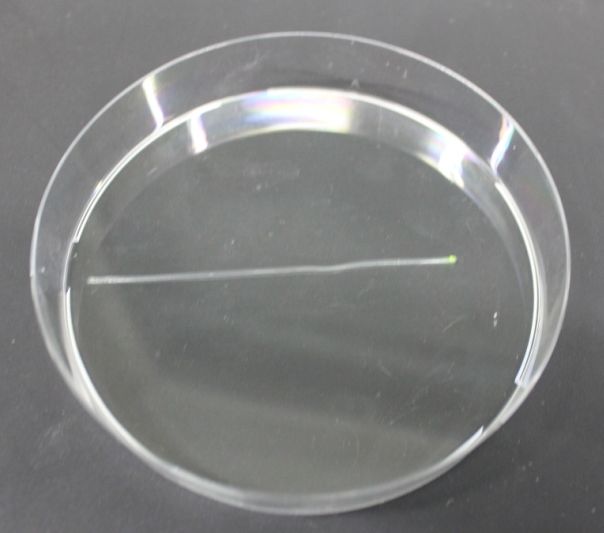Team:ETH Zurich/Process/Microfluidics
From 2011.igem.org
(Difference between revisions)
(→Microfluidic channel with flow and recycling of the medium) |
(→Microfluidic channel with flow and recycling of the medium) |
||
| Line 19: | Line 19: | ||
We came up with two different possible microfluidic channel designs, both involving a flow of toxic molecule in medium through the channel: | We came up with two different possible microfluidic channel designs, both involving a flow of toxic molecule in medium through the channel: | ||
| - | * '''Variant 1: Plate with cells-in-agarose-filled cubic "pixels" and a microfluidic channel above. '''This channel design consists of two parts: A PDMS plate with regular cubic "pixels" that is filled with cells in agarose by letting the liquid cell-agarose solution flow over the pixels by gravity. The cell-agarose liquid is then cooled down and the solidified surplus cell-agarose gel scraped off. The second part is a larger PDMS channel, which is several pixels wide and several pixels high. It is then laid on top of the pixel structure and clamped tightly in order to create seal. Though this setup is rather complex, it has the advantage of having immobilized cells and thus being more robust, i.e. we could vary flow speeds or even put aerosol in the channel without the cells being washed out. | + | * '''Variant 1: Plate with cells-in-agarose-filled cubic "pixels" and a microfluidic channel above. '''This channel design consists of two parts: A PDMS plate with regular cubic "pixels" that is filled with cells in agarose by letting the liquid cell-agarose solution flow over the pixels by gravity. The cell-agarose liquid is then cooled down and the solidified surplus cell-agarose gel scraped off. The second part is a larger PDMS channel, which is several pixels wide and several pixels high. It is then laid on top of the pixel structure and clamped tightly in order to create seal. Though this setup is rather complex, it has the advantage of having immobilized cells and thus being more robust, i.e. we could vary flow speeds or even put aerosol in the channel without the cells being washed out. Additionally, cell density can be varied very easily in this design as the cells can be diluted before being immobilized in agarose. |
{|style="border: none;" align="center" | {|style="border: none;" align="center" | ||
|valign="top"|[[File:flowchannel_pixel.png|500px|center|thumb|'''Experimental setup for SmoColi.''' ]] | |valign="top"|[[File:flowchannel_pixel.png|500px|center|thumb|'''Experimental setup for SmoColi.''' ]] | ||
| Line 29: | Line 29: | ||
|} | |} | ||
| - | * '''Variant 2: Microfluidic channel with cells sitting in pockets in the channel.''' | + | * '''Variant 2: Microfluidic channel with cells sitting in pockets in the channel. '''This channel design only consists of one part: A PDMS channel that is fixed onto a glass carrier. The PDMS channel contains pockets which hold the cells given a constant flow from the direction of the "open end" of the pockets. This channel design does not have the advantages of the above one, i.e. it is not as robust and cell density cannot be reliably varied. However, manufacturing it is a standard process and thus easier. |
[[File:flowchannel_pockets.png|400px|center|thumb|'''Experimental setup for SmoColi.''' ]]<br clear="all" /> | [[File:flowchannel_pockets.png|400px|center|thumb|'''Experimental setup for SmoColi.''' ]]<br clear="all" /> | ||
|} | |} | ||
Revision as of 01:52, 22 September 2011
| Microfluidics |
| ||
|
We relatively early figured out that we need some kind of channel to establish the acetaldehyde or xylene gradient required for SmoColi (see Circuit Design). However, there were several different possible channel designs, and the final design evolved through an iterative series of design steps and design validations. The first designs were validated based on vast simulations, the final design furthermore by biological experiments in the lab (see Systems Validation). | |||
Initial Channel DesignsMicrofluidic channel with flow and recycling of the mediumWe came up with two different possible microfluidic channel designs, both involving a flow of toxic molecule in medium through the channel:
|
 "
"





